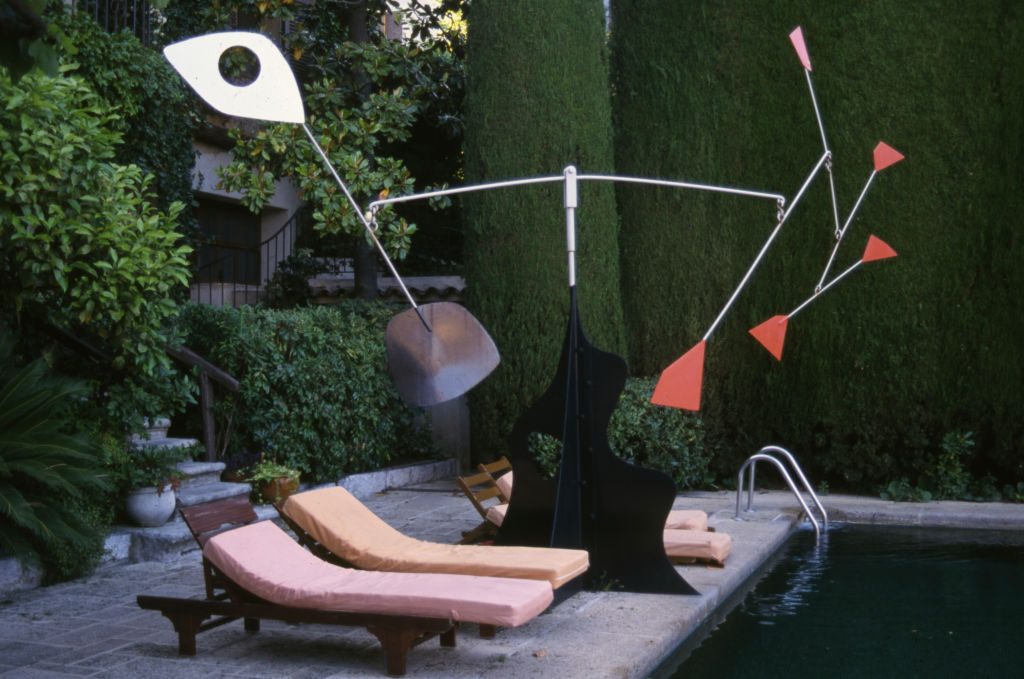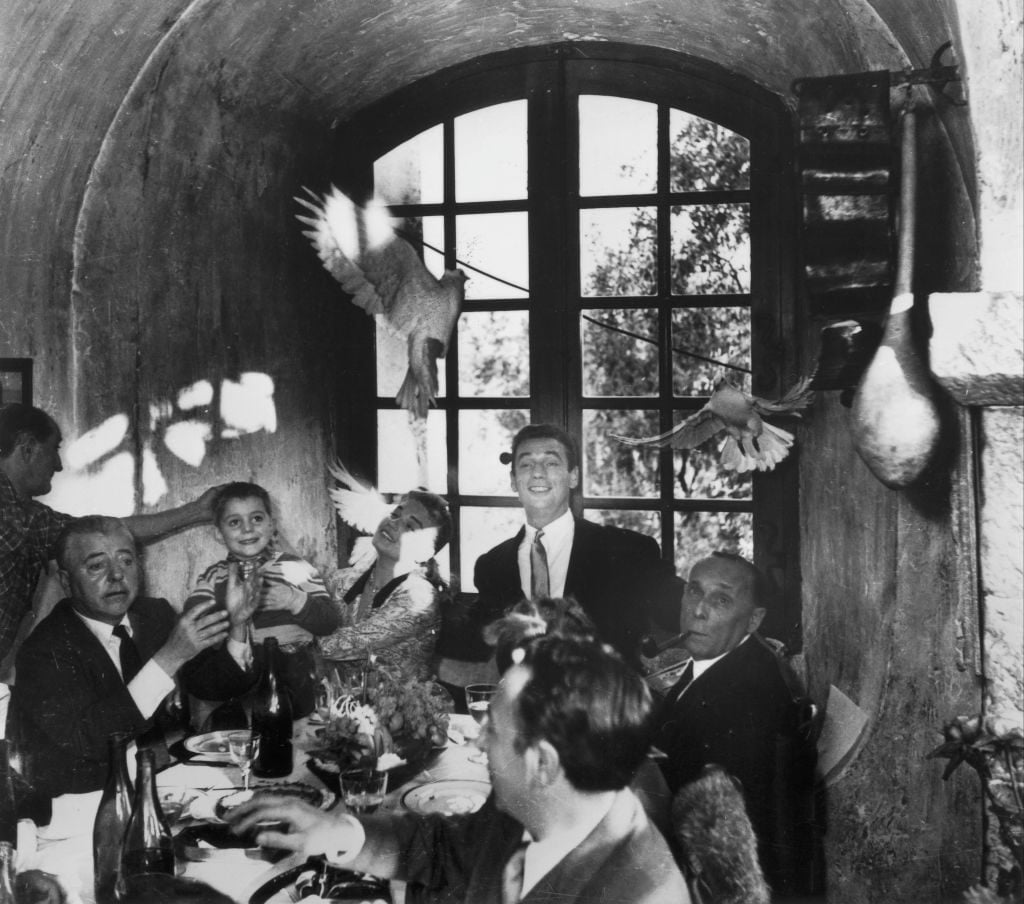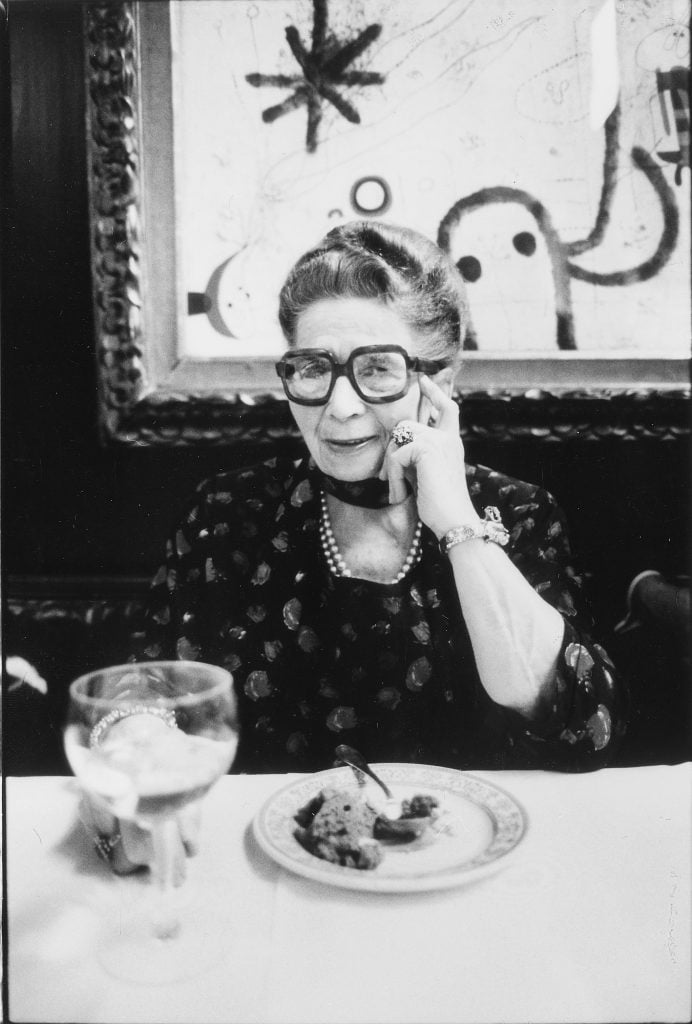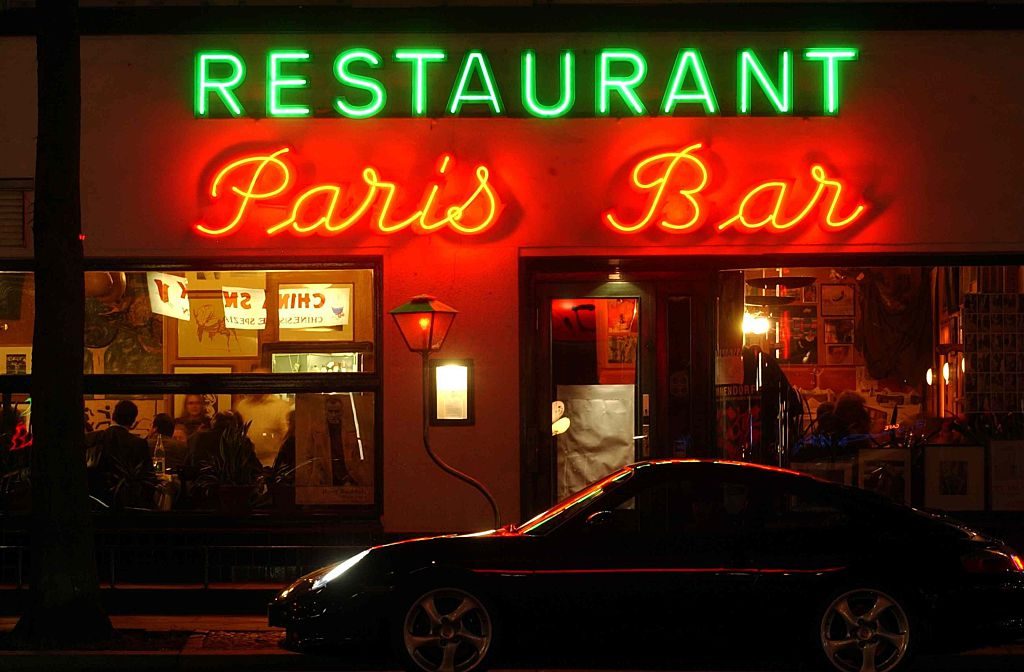The Hammer
Simon de Pury Reveals His Little Black Book of Hotels and Restaurants Where Art Is on the Menu
Take it from a man who has spent more time in hotel rooms than his own bed.

Take it from a man who has spent more time in hotel rooms than his own bed.

Every month in The Hammer, art-industry veteran Simon de Pury lifts the curtain on his life as the ultimate art-world insider, his brushes with celebrity, and his invaluable insight into the inner workings of the art market.
Just in time for its 90th birthday, the legendary Waldorf Astoria New York hotel has reopened its doors. Over the last five years, this Art Deco jewel has been painstakingly restored at the instigation of its Chinese owners, Dajia U.S. The French design firm of Jean-Louis Deniot has fully revamped the interiors, creating a fresh ambiance that nevertheless respects the spirit of this iconic, quintessentially New York, location.
The Waldorf Astoria Towers is where I stayed when I made my first business trip to New York more than 40 years ago. Baron Hans Heinrich Thyssen-Bornemisza, of whose phenomenal collection I had the privilege of curating, recommended it. The minute I first walked into its busy lobby I was electrified by its atmosphere. Businesspeople from all over the world, bankers, traders, tourists, artists, elegant ladies, children, and their nannies were creating an irresistible bustle and buzz. Sitting in a corner observing the tableau was more exciting than watching any movie. You heard every language around you, and it was instantly energizing. I realized that the Waldorf Astoria was representative of the melting pot that is New York—a city that I have come to love through all its mutations.
In late 2016, Tianjing (Nico) Zhou, the young executive from Dajia U.S., read The Auctioneer, my book cowritten with William Stadiem. He contacted me and set an appointment. He explained to me his vision for the new Waldorf Astoria and asked if I would be interested in helping him acquire artworks that could be displayed in both the public areas as well as the private rooms of the hotel. As someone who, over the years of being a sort of traveling salesman, had spent more time in hotel rooms than in my own bed and in more restaurants than in my own kitchen, this project seemed very exciting.
Most hoteliers and restaurateurs tend to be pragmatic when it comes to choosing the design elements and what goes on the walls of their projects. A budget would be allocated, and every year the accountants would write down the overall value of the furnishings and decorations until a totally new refitting was required, every 10 years or so. In the guest rooms you would mostly have prints on the wall—and often the same image, regardless of which room you were staying in.

Yves Montand and Simone Signoret’s wedding in Saint-Paul-de-Vence at “La Colombe d’Or” in 1951. Photo by Michel MAKO/Gamma-Rapho via Getty Images.
Of course, guests tend to pay most attention to the personalized quality of service, the amenities and facilities that are available, and spotless cleanliness. When I think, however, of my favorite places, those that have a soul, they all have art and design that are equivalent or better than what you would put in your own home. The Colombe d’Or in Saint-Paul-de-Vence is such a place. I remember my first visit, when the French singer and actor Yves Montand was sitting at a table with his wife, the actress Simone Signoret. Next to the small but charming swimming pool was a large Calder stabile sculpture. Wonderful works by Picasso, Braque, Miró, and Chagall, as well as by César and Arman, were visible in every corner of the old buildings. A large mosaic by Fernand Léger in the garden made the table situated closest to it the most desirable one.
I speak in the past tense solely because I am describing my first impressions from many years ago. I could just as well speak in the present, since literally nothing at the august hotel has changed since, including the large menus written in multiple colors. Continuity was ensured by having the same family of owners. They were able over the years to resist the siren chants of the many art dealers who were trying to convince them to part with some of the artworks and capitalize on the ever-climbing prices on the art market. A Christmas holiday I spent with my then four children and their mother there remains unforgettable. Surely there is more luxury in most five-star palaces, but nothing can replace the aura of being surrounded by art.

Hilda Zumsteg celebrating her 80th birtdday at the Kronenhalle Zurich in 1980. Photo by Ruedi Bliggenstorfer/RDB/ullstein bild via Getty Images.
The Kronenhalle in Zurich is a similar example. Even if I am in Switzerland’s banking center for a single day, it is an imperative that I eat there. The original owners, Hilda Zumsteg and her son Gustav, are no longer there, but a good part of their art collection is—including a gorgeous early still life by Miró. You enjoy your Zürcher Geschnetzeltes mit Rösti under works by Picasso, Varlin, Chagall, Bonnard, or Giovanni Giacometti. I recall seeing Andy Warhol and dealer Thomas Ammann in 1978 having dinner there at the time of Warhol’s one-man show at the Kunsthaus Zurich. Having lunch or dinner at the Kronenhalle is as magical today as it was back then. Again, it is the art that makes all the difference.
A visit to Berlin, however short, must include a meal or drink at the Paris Bar, the small bistro founded in 1963 in what was then West Berlin. Its walls and even its ceilings are plastered with paintings, drawings, and photographs. Martin Kippenberger made two large paintings of its interior. A sizable Jürgen Teller photograph of a smiling Yves Saint Laurent and a small ceramic figure of Serge Gainsbourg convey (alongside the steak frites, which is the main item on the menu) an air of French savoir vivre in this place where artists, writers, and intellectuals had many drunken nights.

Paris Bar in Berlin. Photo by Volkreich/ullstein bild via Getty Images.
Furniture by a top designer or architect can with time increase so much in value that it is, in the end, worth more than the actual real estate for which it was created. That is the case for the table and chairs that Carlo Mollino designed in the early 1950s for the Casa del Sole in Cervinia, the ski resort on the Italian side of the Matterhorn. A single table and six chairs from its furnishings were sold at Christie’s in 2017 for just under $900,000.
In more recent times, Paddy McKillen—the Irish entrepreneur who is the co-owner of the Maybourne group, which owns Claridge’s, the Connaught, and the Berkeley in London—has made the use of art and design the defining feature of several of his projects. This is the case of Château La Coste, the vineyard and hotel near Aix-en-Provence that has become a magnetic cultural destination with its artworks by Louise Bourgeois, Lee Ufan, Tracey Emin, Sean Scully, Jenny Holzer, Richard Long, and many more.
At the Waldorf Astoria in New York, a number of international artists—Minjung Kim, José Yaque, Andrea Mancuso, and Flavie Audi provided works, some of them site-specific—which will certainly contribute to the overall experience of its many guests. It is my hope that more such projects will see the light of day this century. I love to fantasize about what it would be like to create the ultimate hotel with restaurants from scratch in collaboration with the best contemporary architects, artists and designers.
Simon de Pury is the former chairman and chief auctioneer of Phillips de Pury & Company and is a private dealer, art advisor, photographer, and DJ. Instagram: @simondepury